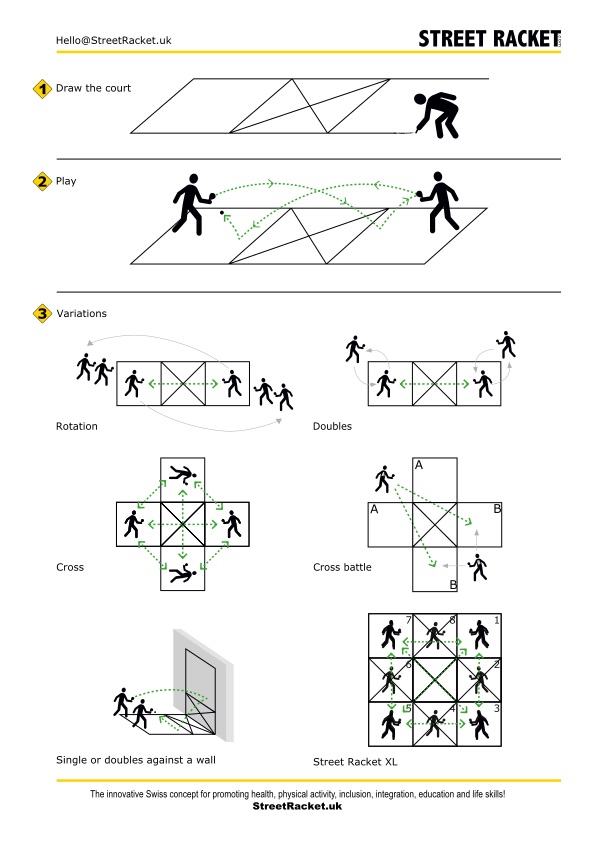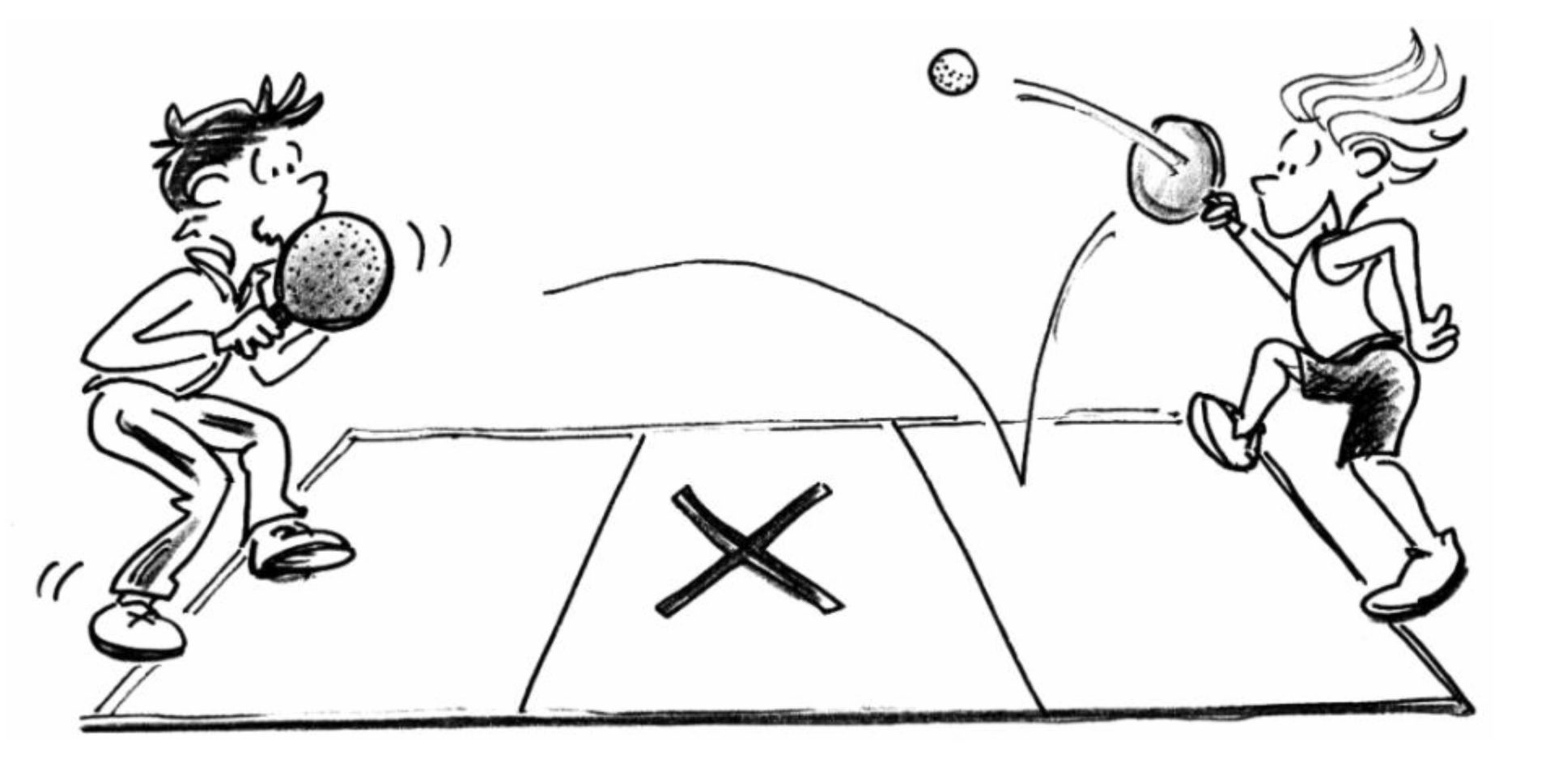how to play
What are the rules?
Street Racket gives everyone, anytime and anywhere the opportunity to be active and healthy.
No specific courts or expensive equipment are required. All you need is some chalk to draw the court on solid ground, some kind of racket and a ball.
The two rules of Street Racket, “no downplay” and “no volley” are the heart of the Street Racket concept. These rules ensure that the game becomes more controlled and the actions become more successful.
The focus of Street Racket is set on ball control, long rallies and the promoting of motor skills.


Download the rules poster
Play Street Racket
Serve & Return
To start (serve), you can play the ball directly out of your hand or after one bounce on the ground. As different players may have a personal preference on how to start a rally, having this option helps to create variation, inclusivity, and good rallies.
- The ball is hit with the racquet from the first square to the opposite side (over the middle square).
- Leaving the racquet, the ball must move upward or horizontally at least briefly (no downplay & no smashing).
- The ball must hit the ground once before return – no volley shots.
- The winner of a rally starts the next rally.
- The winner of a set opens the following set.
- After each set is complete, players change sides.


Positioning
Street Racket wants to make racquet sports accessible to everyone, with as little complications as possible. It therefore wants to have few set rules. This is also the case with footwork and positioning. A player can stand wherever they like during rallies. There is only one rule:
- For the first hit of each rally, the player must not touch the middle square or its line.
A Valid Point
The Street Racket rules ensure a social, benevolent, motivating atmosphere designed to be inclusive and not exclude anyone! The Street Racket concept therefore promotes inclusion and integration. It is suited to all player levels and age groups. The two rules “no downplay” and “no volley” are at the heart of the Street Racket game. These rules ensure the game is controlled and playing actions are more successful. The focus of Street Racket is on ball control, long rallies, and developing motor skills (especially hand-eye coordination).
Described here, is an example for a single game (1 player per side).
- For all hits, your ball must move upwards or horizontally after contact with the racquet (no volley, no downplay & no smashing).
- You hit the ball upwards or horizontally toward the square of the other player.
- If your ball lands outside the square of the other player (or inside the middle zone) the other player wins the point .
- If the ball touches the line of the players’ square, the ball is in and the game continues.
- The ball has to bounce within the players’ square once (and only once) before it is played back.
- Two consecutive bounces on the ground and the point is awarded to the other player.
- If, upon contact with the racquet, the ball moves immediately in a downward motion, the point is awarded to the the other player.
The basic rules ensure there is enough time to react to a shot and no player can dominate a game or a rally (for example with force, power or hard hitting) and everyone can play. Street Racket is a game for everyone, including beginners with professionals, young with old, women with men.
Counting
Court(s)
- No purchase of a net.
- No setting up of a net.
- No maintenance.
- No poles.
- No holes.
- Just draw the court and play!



The Street Racket Ball
- To encourage feelings of success and quick progress.
- To bounce in just the right way to go with the racquets and the court system.
- It has the ideal rebound on the racquet or wall.
- The ball is not be too small and not too light, so it’s not too difficult to play on uneven grounds and is not affected too much by the wind.
- The ball cannot cause any damage to people and the environment.
- The ball does not leave marks (either indoors and outdoors), because it doesn’t soak up moisture.
- Also, because it doesn’t soak up moisture, the ball doesn’t get too heavy.
Your Racquet
- The light racquets have an enlarged face fso the ball can be hit easily by everyone from the very start.
- Making contact with the ball is pleasant because the sound and impact are both very soft.
- The wooden racquet has a very nice feel to it.
- The texture of the wood makes sure your grip doesn’t slip even with sweaty palms.
“The basic rules (no volley, no downplay) should be followed by all and by new forms of playing as this is essential to the concept of successful sports and education development. And all the other positive aspects we include in the concept will be promoted much more effectively by sticking to the characteristic rules!”
